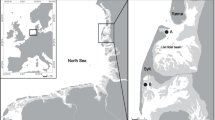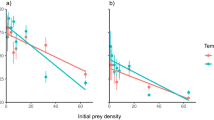Abstract
Fish-farming can lead to eutrophication of freshwater environments through the increase in organic matter resulting from food supplementation and fish wastes. Eutrophication can induce an excessive development of plants and algae on various substrates, including living organisms (algal epibiosis). Although algal epibiosis has been shown to reduce mobility by increasing drag in marine species, its consequences on host species in freshwater ecosystems remain poorly known. In this study, we investigated the individual (age and sex) and environmental (extensive versus intensive fish-farming) determinants of epizoic algae presence and abundance on European pond turtles (Emys orbicularis). We also explored the potential consequences of algal epibiosis on fitness-related traits of E. orbicularis. Based on a large sample size (1112 turtles from 23 ponds), we found that the abundance of algae growing on turtles increased during spring and summer. However, such increase was different across ages and sex; presumably reflecting the influence of thermoregulation (required to increase metabolic rates to sustain growth and reproduction) and thus, periodical drying of the shell, in reducing algal cover. We also found that intensive fish-farming increased algal epibiosis, especially when fish-farming involved food supplementation. Finally, we found that adult female body condition and reproduction of turtles were negatively linked to algal cover, thereby suggesting a potential negative impact of algal fouling on some fitness-related traits of adult female turtles. Future studies should usefully assess the demographic consequences of algal epibiosis induced by fish farming in this long-lived vertebrate.





Similar content being viewed by others
Data availability
Data will be made available upon reasonable request.
Code availability
N/A
References
Akgul R, Caprazli T, Turker N, Erdugan H, Tosunoglu M (2014) Epizoic algae on Emys orbicularis (Linnaeus, 1758), and Mauremys rivulata (Valenciennes, 1833), in the Kayak River Delta (Saros Bay, Turkey)(Testudines: Emydidae, Geoemydidae). Herpetozoa 27:21–28
Allen YC, De Stasio BT, Ramcharan CW (1993) Individual and population level consequences of an algal epibiont on Daphnia. Limnol Oceanogr 38:592–601
Aubin J, Papatryphon E, van der Werf HMG, Chatzifotis S (2009) Assessment of the environmental impact of carnivorous finfish production systems using life cycle assessment. J Clean Prod 17:354–361
Barea-Arco J, Pérez-Martínez C, Morales-Baquero R (2001) Evidence of a mutualistic relationship between an algal epibiont and its host, Daphnia pulicaria. Limnol Oceanogr 46:871–881
Benarrous R (2017) La Grande Brenne, histoire d’une zone humide continentale et de ses étangs. Parc naturel de la Brenne, 66e supplément à la Revue Archéologique du Centre de la France
Bertrand J (2018) Etude préliminaire des diatomées des Cistudes d’Europe (Emys orbicularis) des Etangs de La Brenne, France. Réserve Naturelle Nationale de Chérine, unpublished report
Burgin S, Renshaw A (2008) Epizoochory, algae and the Australian eastern long-necked turtle Chelodina longicollis (Shaw). Am Midl Nat 160:61–68
Burris ZP, Dam HG (2014) Deleterious effects of the ciliate epibiont Zoothamnium sp. on fitness of the copepod Acartia tonsa. J Plankton Res 36:788–799
Bury RB, Wehr JD, Bury GW, Baggett CL, Doten K (2015) High incidence of filamentous algae on western pond turtles, Actinemys marmorata, in the Willamette Valley, Oregon. Northwestern Nat 96:150–153
Candolin U, Engström-Öst J, Salesto T (2008) Human-induced eutrophication enhances reproductive success through effects on parenting ability in sticklebacks. Oikos 117:459–465
Carrière M-A, Rollinson N, Suley AN, Brooks RJ (2008) Thermoregulation when the growing season is short: sex-biased basking patterns in a northern population of painted turtles (Chrysemys picta). J Herpetol 42:206–209
Christiansen JL, Davis DR, Jacobson ER, LaDuc TJ (2020) Carapacial shell disease process revealed by a long-term field study of the yellow mud turtle, Kinosternon flavescens, in Texas. J Herpetol 54:1–8
Dolbeth M, Cardoso P, Pardal MÂ (2010) Impact of eutrophication on the seagrass assemblages of the Mondego Estuary (Portugal). In: Ansari AA, Singh Gill S, Lanza GR, Rast W (eds) Eutrophication: causes, consequences and control. Springer Netherlands, Dordrecht, pp 225–246
Duguy R, Baron T-P (1998) La Cistude d’Europe, Emys orbicularis, dans le marais du Brouage (Charente-Maritime) : cycle d’activité, thermorégulation, déplacements, reproduction et croissance. Annales de la Société des sciences naturelles de la Charente-Maritime 8:781–803
Edgren RA, Edgren MK, Tiffany LH (1953) Some North American turtles and their epizoophytic algae. Ecology 34:733–740
Edwards AL, Blouin-Demers G (2007) Thermoregulation as a function of thermal quality in a northern population of painted turtles, Chrysemys picta. Can J Zool 85:526–535
Ersanli ET, Gonulol A (2015) Epizoophyte composition on spotted turtle Emys orbicularis (Linnaeus, 1758) in Turkey. Bangladesh J Bot 43:157–161
Fayolle S, Moriconi C, Oursel B, Koenig C, Suet M, Ficheux S et al (2016) Epizoic Algae distribution on the carapace and plastron of the European pond turtle (Emys orbicularis, Linnaeus, 1758): a study from the Camargue, France. Cryptogam Algologie 37:221–232
Fitridge I, Dempster T, Guenther J, de Nys R (2012) The impact and control of biofouling in marine aquaculture: a review. Biofouling 28:649–669
Frick MG, Pfaller JB (2013) Sea turtle epibiosis. In: Wyneken J, Lohmann KJ, Musick JA (eds) The biology of sea turtles, vol 3. CRC Press, Boca Raton, pp 399–426
Gamble T (2006) The relative efficiency of basking and hoop traps for painted turtles (Chrysemys picta). Herpetol Rev 37:308–312
Garbary DJ, Bourque G, Herman TB, McNeil JA (2007) Epizoic Algae from freshwater turtles in Nova Scotia. J FreshwEcol 22:677–685
Gibbons JW (1968) Carapacial algae in a population of the painted turtle, Chrysemys picta. Am Midl Nat 79:517
Goldman JC, Porcella DB, Joe Middlebrooks E, Toerien DF (1972) The effect of carbon on algal growth—its relationship to eutrophication. Water Res 6:637–679
Gubelit YI, Berezina NA (2010) The causes and consequences of algal blooms: the Cladophora glomerata bloom and the Neva estuary (eastern Baltic Sea). Mar Pollut Bull 61:183–188
Hammond KA, Spotila JR, Standora EA (1988) Basking behavior of the turtle Pseudemys scripta: effects of digestive state, acclimation temperature, sex, and season. Physiol Zool 61:69–77
Harper RM (1950) Algae on animals: a bibliographical note. Ecology 31:303–304
Hecky RE, Kilham P (1988) Nutrient limitation of phytoplankton in freshwater and marine environments: a review of recent evidence on the effects of enrichment 1. Limnol Oceanogr 33:796–822
Hulse AC (1976) Carapacial and plastral flora and fauna of the Sonora mud turtle, Kinosternon sonoriense Le Conte (Reptilia, Testudines, Kinosternidae). J Herpetol 10:45
Khan FA, Ansari AA (2005) Eutrophication: an ecological vision. Bot Rev 71:449–482
Krawchuk MA, Brooks RJ (1998) Basking behavior as a measure of reproductive cost and energy allocation in the painted turtle, Chrysemys picta. Herpetologica 54:112–121
Kümmerer K (2009) Antibiotics in the aquatic environment – a review – Part I. Chemosphere 75:417–434
Landoulsi J, Cooksey KE, Dupres V (2011) Review – interactions between diatoms and stainless steel: focus on biofouling and biocorrosion. Biofouling 27:1105–1124
Lefevre K, Brooks RJ (1995) Effects of sex and body size on basking behavior in a northern population of the painted turtle, Chrysemys picta. Herpetologica 51:217–224
McQueen DJ, Lean DRS (1987) Influence of water temperature and nitrogen to phosphorus ratios on the dominance of blue-green algae in Lake St. George, Ontario. Can J Fish Aquat Sci 44:598–604
Nasri H, El Herry S, Bouaïcha N (2008) First reported case of turtle deaths during a toxic Microcystis spp. bloom in Lake Oubeira, Algeria. Ecotoxicol Environ Saf 71:535–544
Neil WT, Allen ER (1954) Algae on turtles: some additional considerations. Ecology 35:581–584
Nguyen T, Roddick F, Fan L (2012) Biofouling of water treatment membranes: a review of the underlying causes, monitoring techniques and control measures. Membranes 2:804–840
Nixon SW (1995) Coastal marine eutrophication: a definition, social causes, and future concerns. Ophelia 41:199–219
Olivier A (2002) Ecologie, traits d’histoire de vie et conservation d’une population de cistude d’Europe, Emys orbicularis, en Camargue. Unpublished thesis, Ecole Pratique des Hautes Etudes, Montpellier, France, 164p
Pedroso Dias RJ, D’avila S, Wieloch AH, D’Agosto M (2008) Protozoan ciliate epibionts on the freshwater apple snail Pomacea figulina (Spix, 1827)(Gastropoda, Ampullariidae) in an urban stream of south-east Brazil. J Nat Hist 42:1409–1420
Pfaller JB, Frick MG, Brischoux F, Sheehy CM, Lillywhite HB (2012) Marine snake epibiosis: a review and first report of decapods associated with Pelamis platurus. Integr Comp Biol 52:296–310
Proctor VW (1958) The growth of Basicladia on turtles. Ecology 39:634–645
Rodrigues JFM, Silva JRF (2015) Sexual dimorphism, deformations, and epibionts of Phrynops tuberosus (Testudines, Chelidae). Anim Biol 65:311–320
Rosenberg R, Loo L-O (1988) Marine eutrophication induced oxygen deficiency: effects on soft bottom Fauna, Western Sweden. Ophelia 29:213–225
Sexton OJ (1965) The annual cycle of growth and shedding in the midland painted turtle, Chrysemyspictamarginata. Copeia 1965:314
Shine R, Brischoux F, Pile AJ (2010) A seasnake’s colour affects its susceptibility to algal fouling. Proc R Soc B BiolSci 277:2459–2464
Skinner S, FitzSimmons N, Entwisle TJ (2008) The moss-back alga (Cladophorophyceae, Chlorophyta) on two species of freshwater turtles in the Kimberleys. Telopea 12:279–284
Smith VH, Tilman GD, Nekola JC (1999) Eutrophication: impacts of excess nutrient inputs on freshwater, marine, and terrestrial ecosystems. Environ Pollut 100:179–196
Soylu EN, Gönülol A, Sukatar A, Ayaz D, Tok CV (2006) Epizoic freshwater algae on Emys orbicularis (Testudinata: Emydidae) from the Central Anatolia Region of Turkey. J FreshwEcol 21:535–538
Strain PM (2005) Eutrophication impacts of marine finfish aquaculture. Canadian Science Advisory Secretariat, Research Document 2005/034, 37p
Vassal V, Ector L, Van de Vijver B, Roubeix V, Olivier A, Pauvert S, Roy C, Fayolle S (2021) Pond turtle carapaces, an alternative natural substrate for the use of a diatom-based water quality index. Bot Lett 168:18–24
Vollenweider RA (1968) Scientific fundamentals of lake and stream eutrophication, with particular reference to phosphorus and nitrogen as eutrophication factors. Technical Report DAS/DSI/68.27). OECD, Paris
Wahl M (1989) Marine epibiosis. I. Fouling and antifouling: some basic aspects. Mar Ecol Prog Ser 58:175–189
Ziglar CL, Anderson RV (2005) Epizoic organisms on turtles in Pool 20 of the upper Mississippi River. J Freshw Ecol 20:389–396
Zuffi MAL, Gariboldi A (1995) Sexual dimorphism of the European pond terrapin, Emys orbicularis (L., 1758) from Italy. Scientia herpetologica 1995:124–129
Acknowledgements
We thank all the volunteers and the staff from the Réserve Naturelle Nationale de Chérine for their help during field work and especially J. Lemaire, J. Morgnieux and N. Delmas. Two anonymous reviewers as well as the editor provided insightful comments that improved a previous version of this manuscript.
Funding
Funding was provided by the Agence de l’Eau Loire-Bretagne, the WWF (World Wide Fund), the Réserve Naturelle Nationale de Chérine and the Centre National de la Recherche Scientifique (CNRS).
Author information
Authors and Affiliations
Contributions
F.Br. and F.Be. conceived and designed the study; F.Be. collected the data; F.Be. and F.Br. conducted the analyses, interpreted the data, designed the figures and wrote the manuscript.
Corresponding author
Ethics declarations
Ethics approval
This work was approved by the French authorities (DDT-Indre # 36–2018-05–16-003).
Consent to participate
All authors accepted to participate.
Consent for publication
All authors approved the final version of the manuscript.
Conflict of interest
The authors declare no competing interests.
Additional information
Communicated by: Oliver Hawlitschek
Publisher’s note
Springer Nature remains neutral with regard to jurisdictional claims in published maps and institutional affiliations.
Appendix
Appendix
Rights and permissions
About this article
Cite this article
Beau, F., Brischoux, F. Fish-farming bolsters algal fouling and negatively affects condition and reproduction in European pond turtles (Emys orbicularis). Sci Nat 108, 12 (2021). https://doi.org/10.1007/s00114-021-01723-3
Received:
Revised:
Accepted:
Published:
DOI: https://doi.org/10.1007/s00114-021-01723-3




